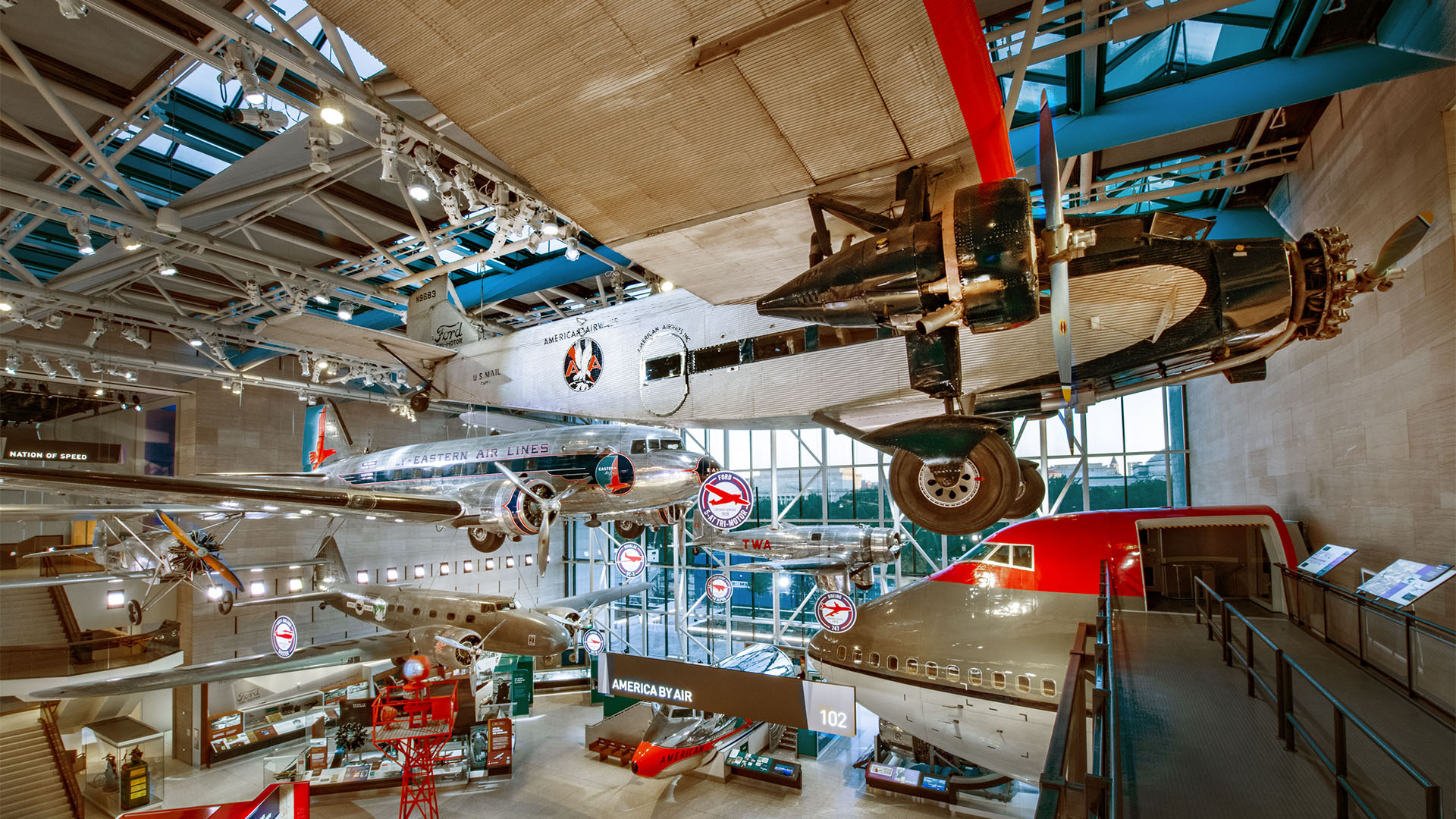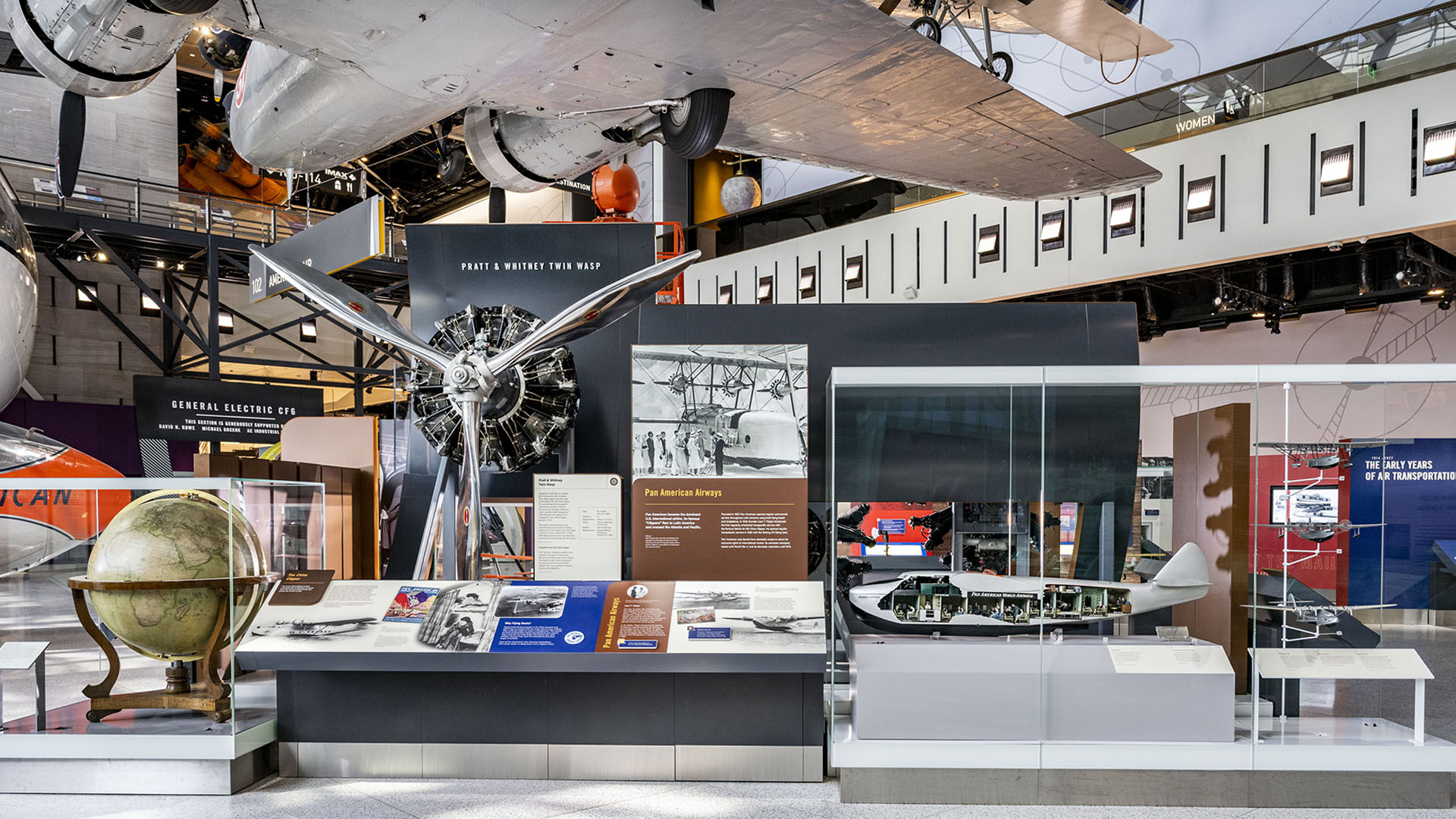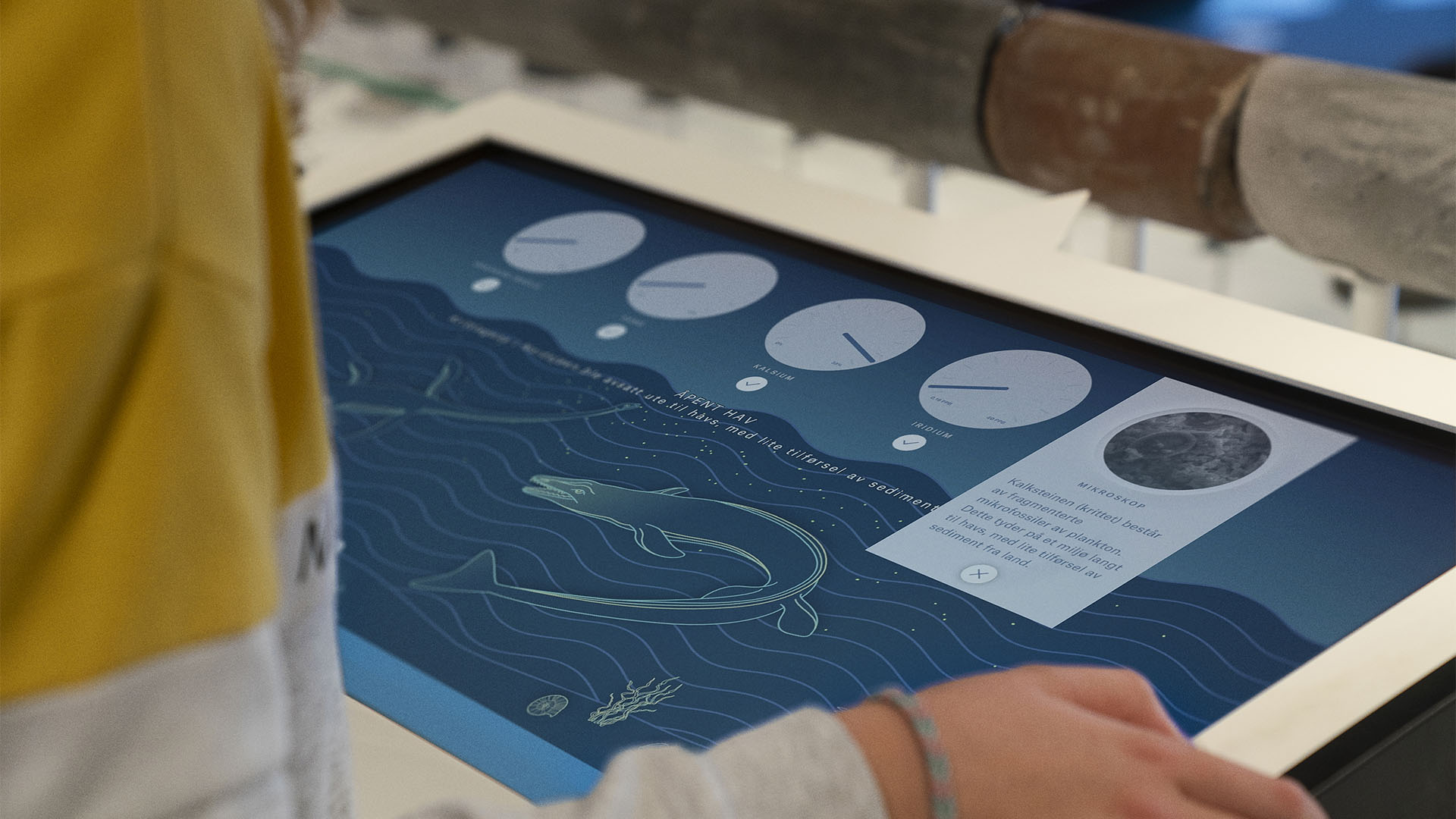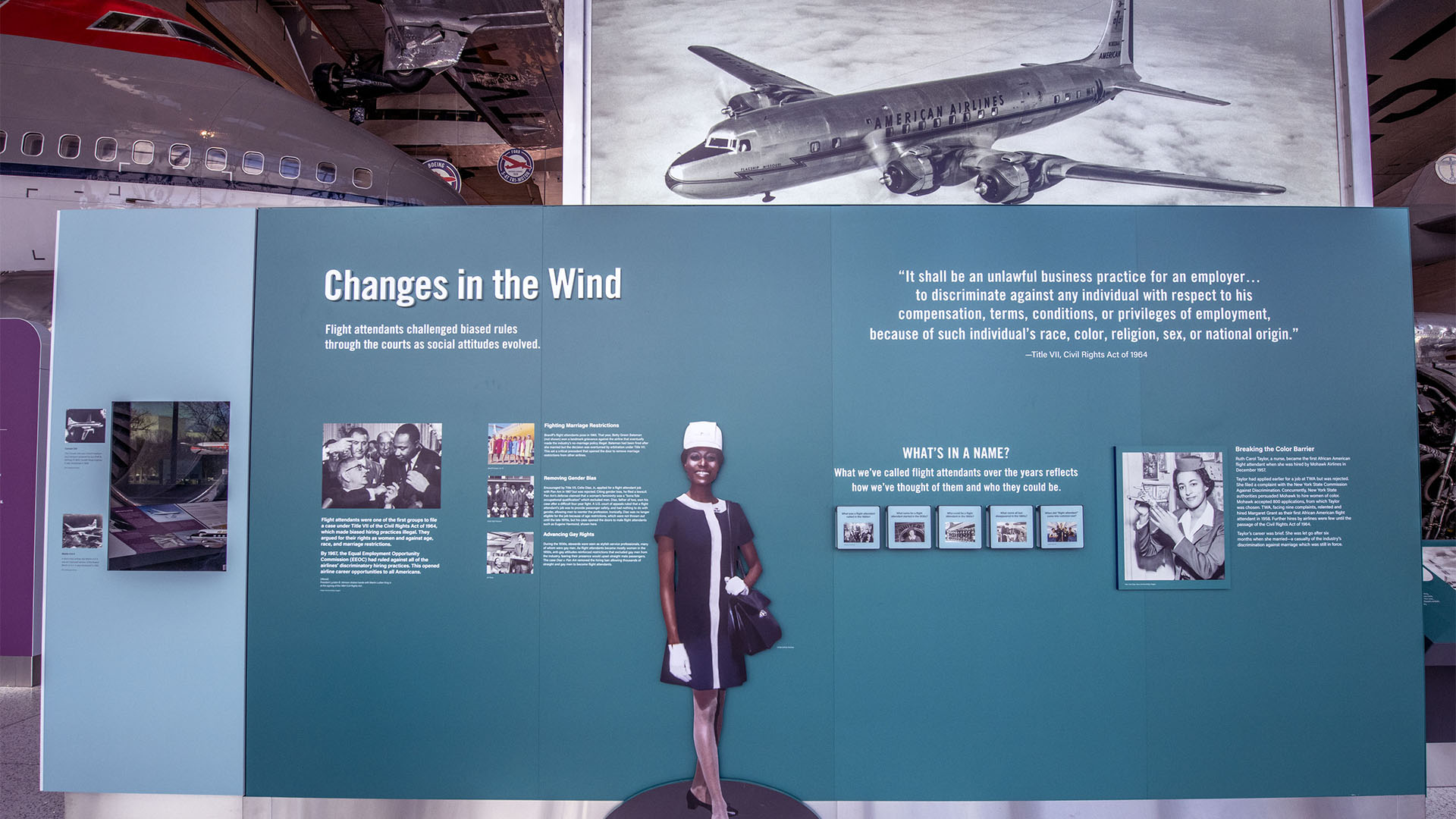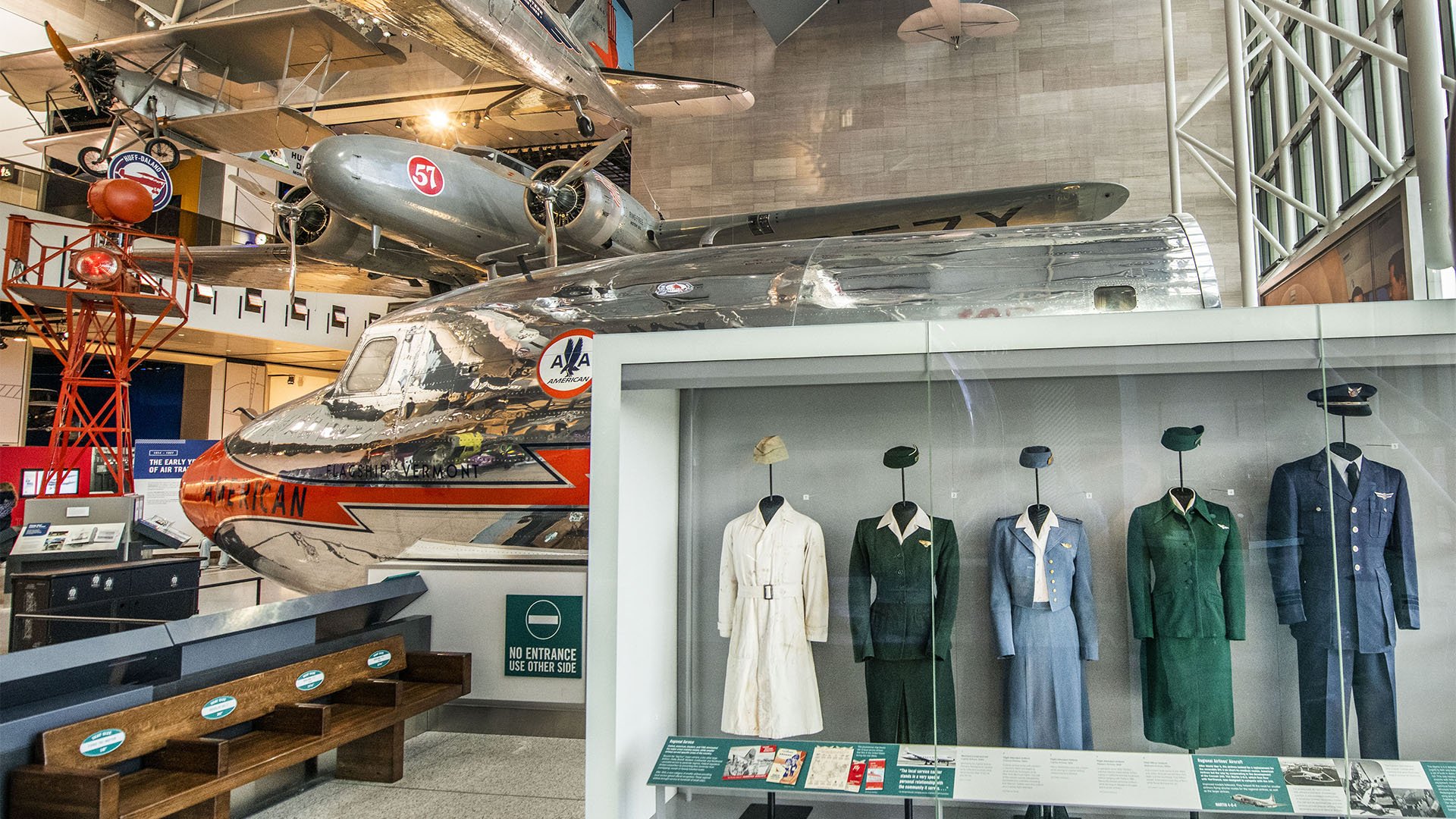America by Air
America by Air tells the story of the creation and development of the U.S. commercial airline industry from its conception in 1914 to the present day. The Museum aims to show how commercial air travel has transformed the American experience, uniting a nation and transforming how it works and plays. The key to the story is the interconnected relationships between business, government, and the traveling public, which are inextricably linked and how these relationships change and evolve through the application of numerous technologies in aviation, propulsion, communications, and navigation.
Agency
Haley Sharpe Design
Practice Area
Client
National Air and Space Museum, Smithsonian Institution
Industry
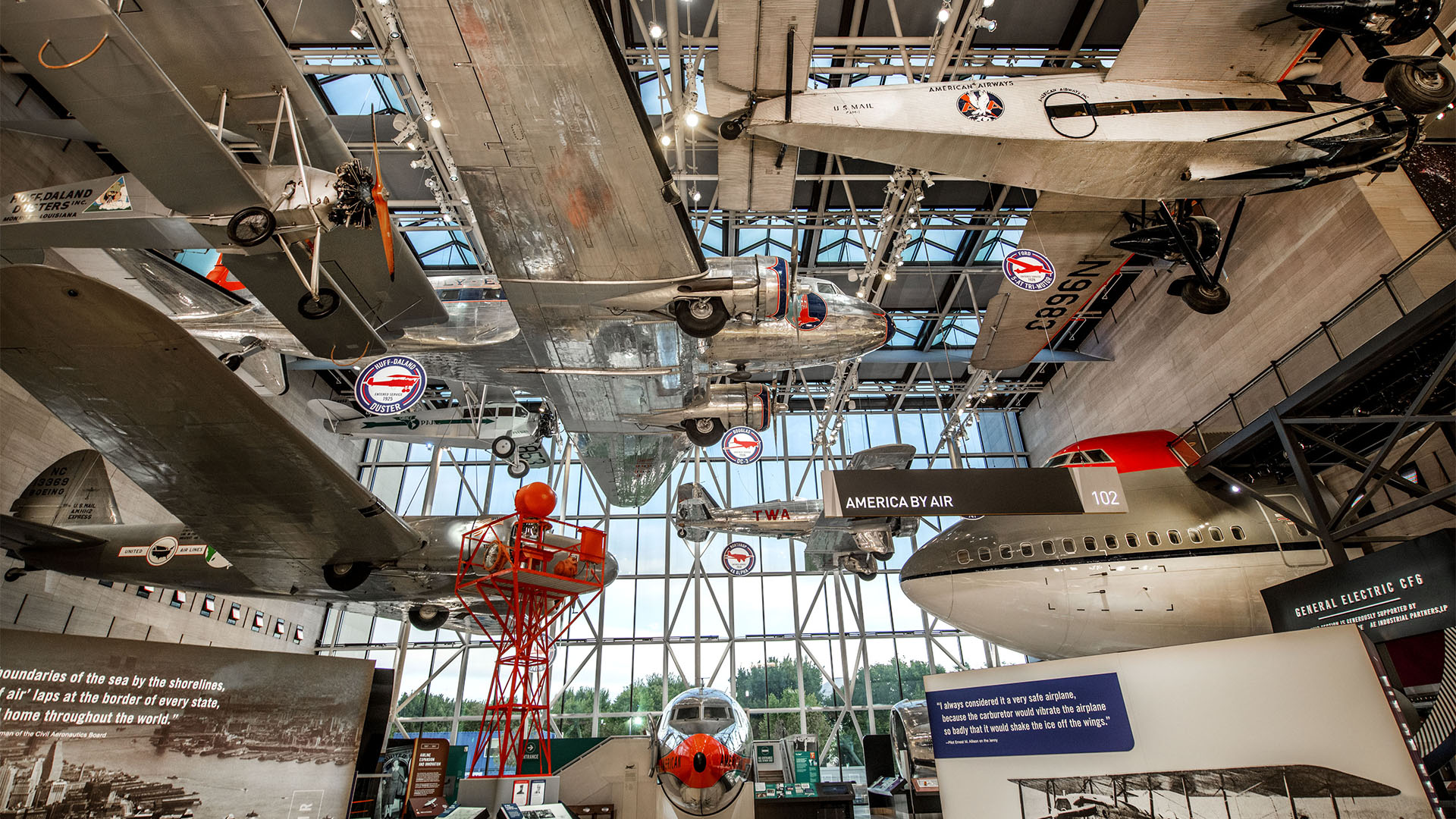
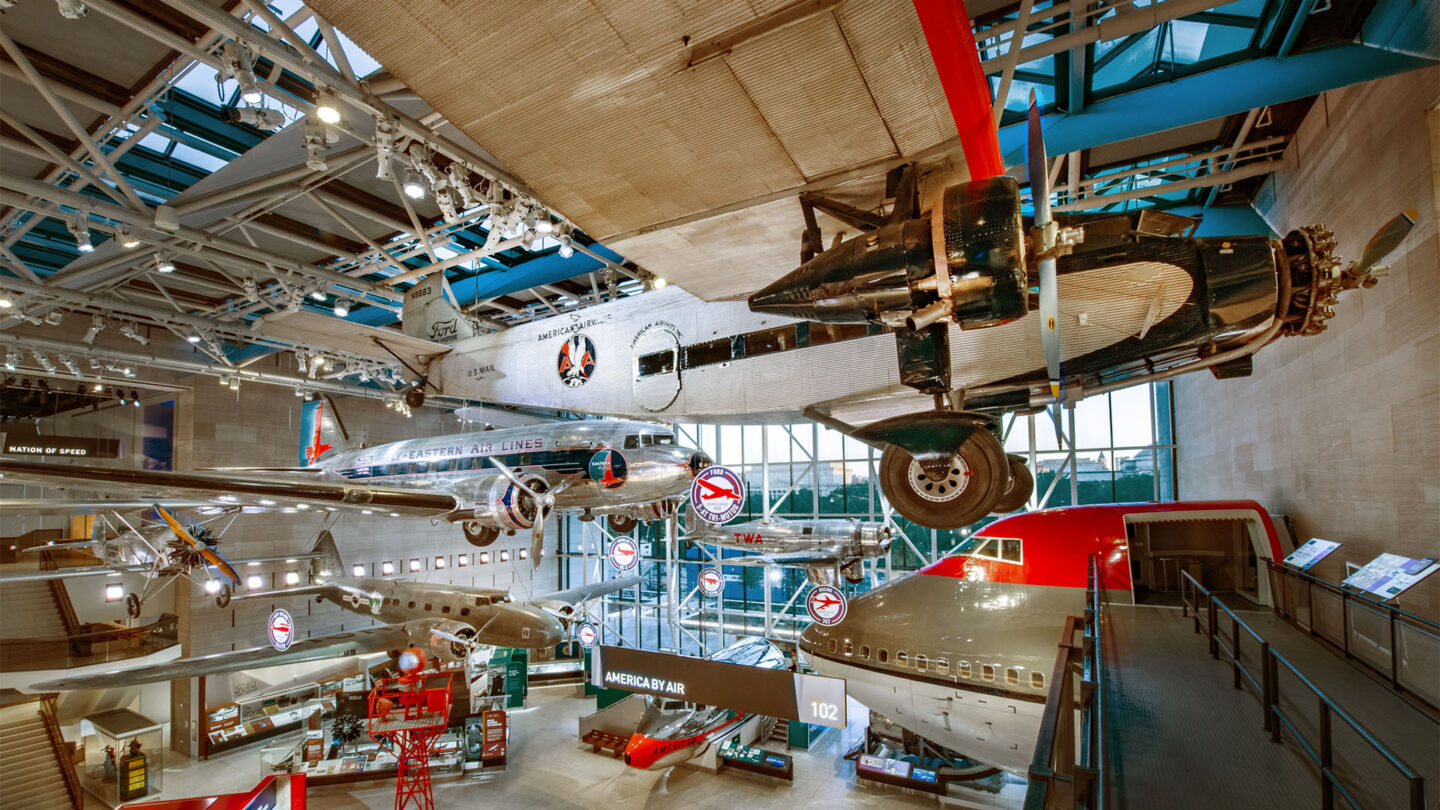
America by Air gallery overview from Boeing 747 bridge with Ford Trimotor in the foreground.
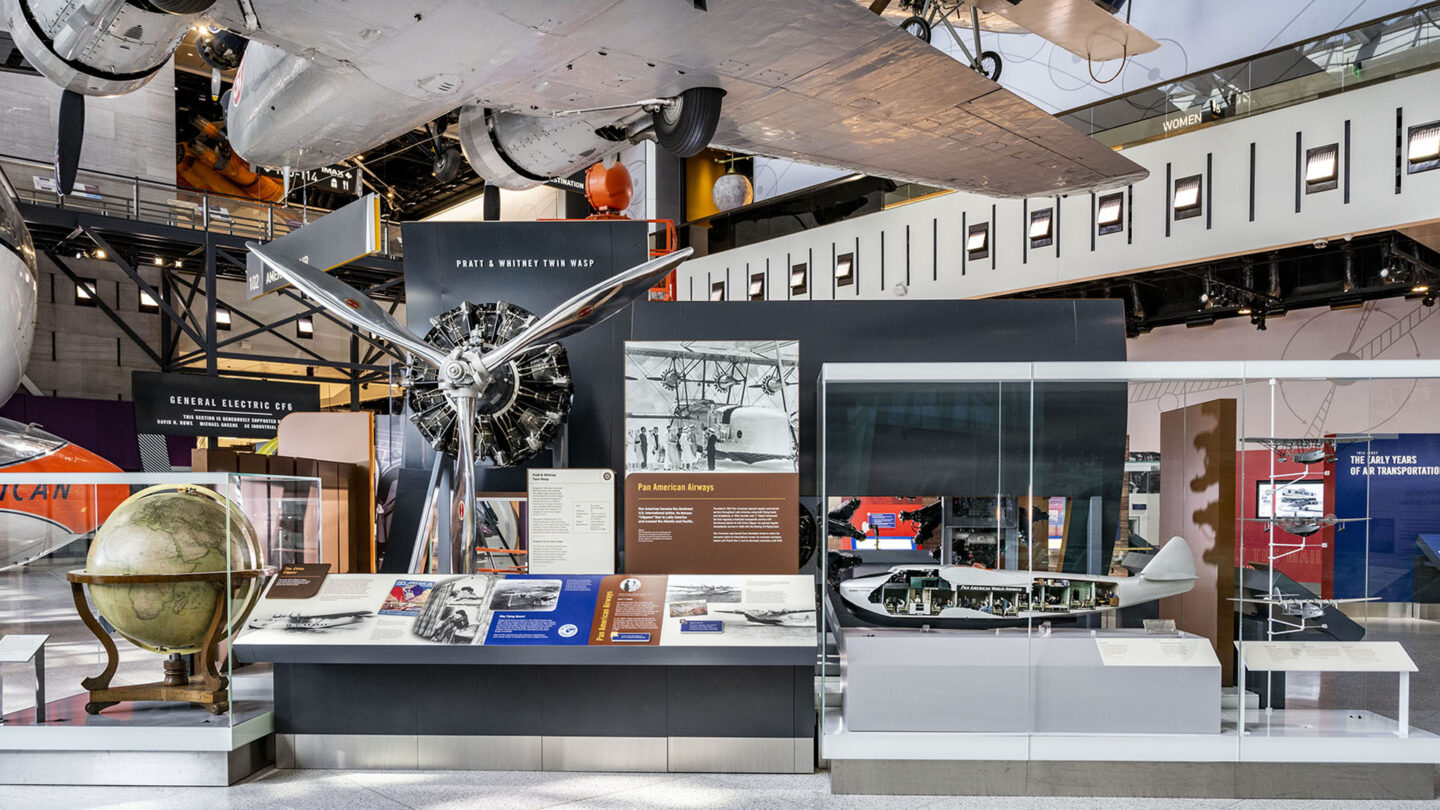
Pan American Airways was the nation’s sole international airline before World War II.
Project Overview
This story is told exclusively through the vast air transportation collections unique to the Museum. Central are the eight aircraft, seven engines, and assorted radio and navigation equipment displayed throughout. A diverse collection of airline uniforms traces the human story of commercial flight with an emphasis on the participation of women and minorities. Numerous personal items highlight the stories of the people who created, operated, and flew on America’s airlines. Hundreds of images from the Museum’s archival and photographic collections strongly support the central themes and interpretive messages.
These objects and artifacts are interpreted through considerable original Museum scholarship provided by the responsible curators, particularly in the relationship between business and government, the creation of the airport and its application as a system, and the development of the modern airliner.
Many visitors are familiar with traveling by plane—but depending on your age, or when you last flew, your flying experiences can differ vastly. Questioning strategies and hands-on activities prompt conversations among the generations to compare what they know and how they feel about air travel, from buying a ticket digitally, to participating in a poll about airport security practices. Visitors can challenge each other to see if they know the changing names for “flight attendant” in the flip-panel interactive called “What’s in a Name?” To keep this changing industry relevant, digital stations give up-to-date stories. Besides the familiar, visitors get a taste of flying in the daring early years of the 20th century. An interactive kiosk challenges visitors to deliver mail on time while encountering changing weather conditions and equipment malfunctions.
The impressive scale of large, suspended aircraft creates a ‘wow’ first impression upon approach to this exhibition. Juxtaposed with the open architecture, artifacts, and variety of exhibit elements, a vibrant harmony beckons the visitor. A new grand entrance from the Museum’s central corridor incorporates wall structures and bold graphics. The nose of an Airbus A320 guides visitors into the space. Colorful editorial-style graphics help navigate the four exhibit sections. Throughout the space, large island plinths create dynamic configurations for visitors to explore engines on open display, cases of airline uniforms and airplane models, and mechanical and computer interactives. Walking through a DC-7 and the nose of the 747 (accessed by a bridge from the 2nd floor mezzanine) provides visitors with an up-close look into the cockpits of these iconic aircraft. As an alternative experience, an accessible digital interactive is near the DC-7. Graphics and text depict people who had been previously unrepresented, which has now become a guiding principle for all the Museum’s storytelling.
Employing universal design principles for maximum audience inclusion is a fundamental Museum objective. Graphics and text follow Smithsonian Guidelines for Accessible Exhibition Design, and tactiles include braille and raised letters. Videos use open captions and computer interactives have enhanced standards: custom scripts giving context and description are available via accessible keypads. Exhibit materials are upgraded for safety, sustainability, and maintenance.
Evaluation and testing were vital components of the interpretive design process, ensuring that the exhibition’s variety of media met learning and engagement objectives for the Museum’s diverse audiences. Insights from visitor testing, performed in areas on the Museum floor, informed ongoing design development. As physical prototypes of interactive exhibit elements became available, we observed visitors using them, and conducted follow-up questions to probe visitors’ reactions and responses in more detail, enabling refinements to pre-production designs.
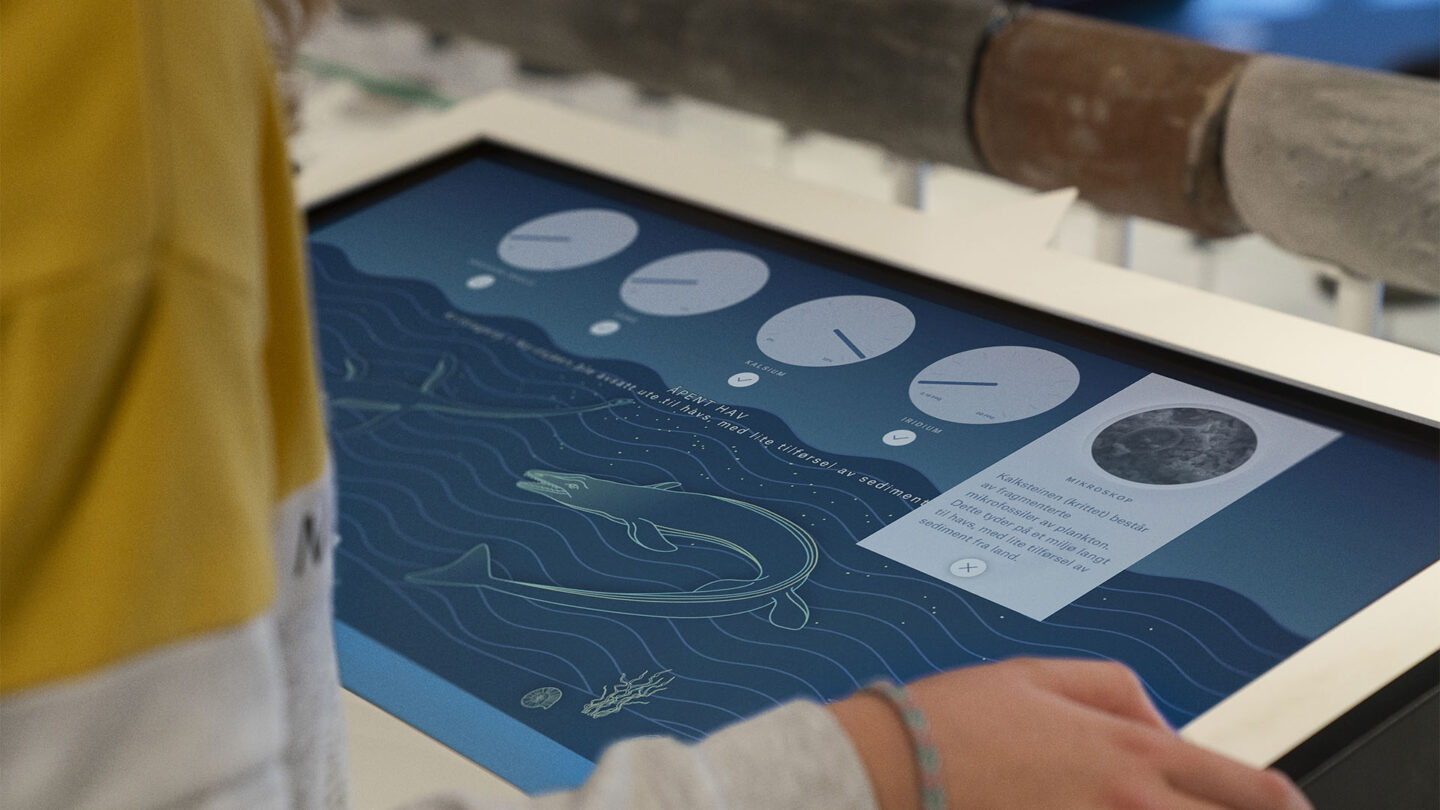
Drill core
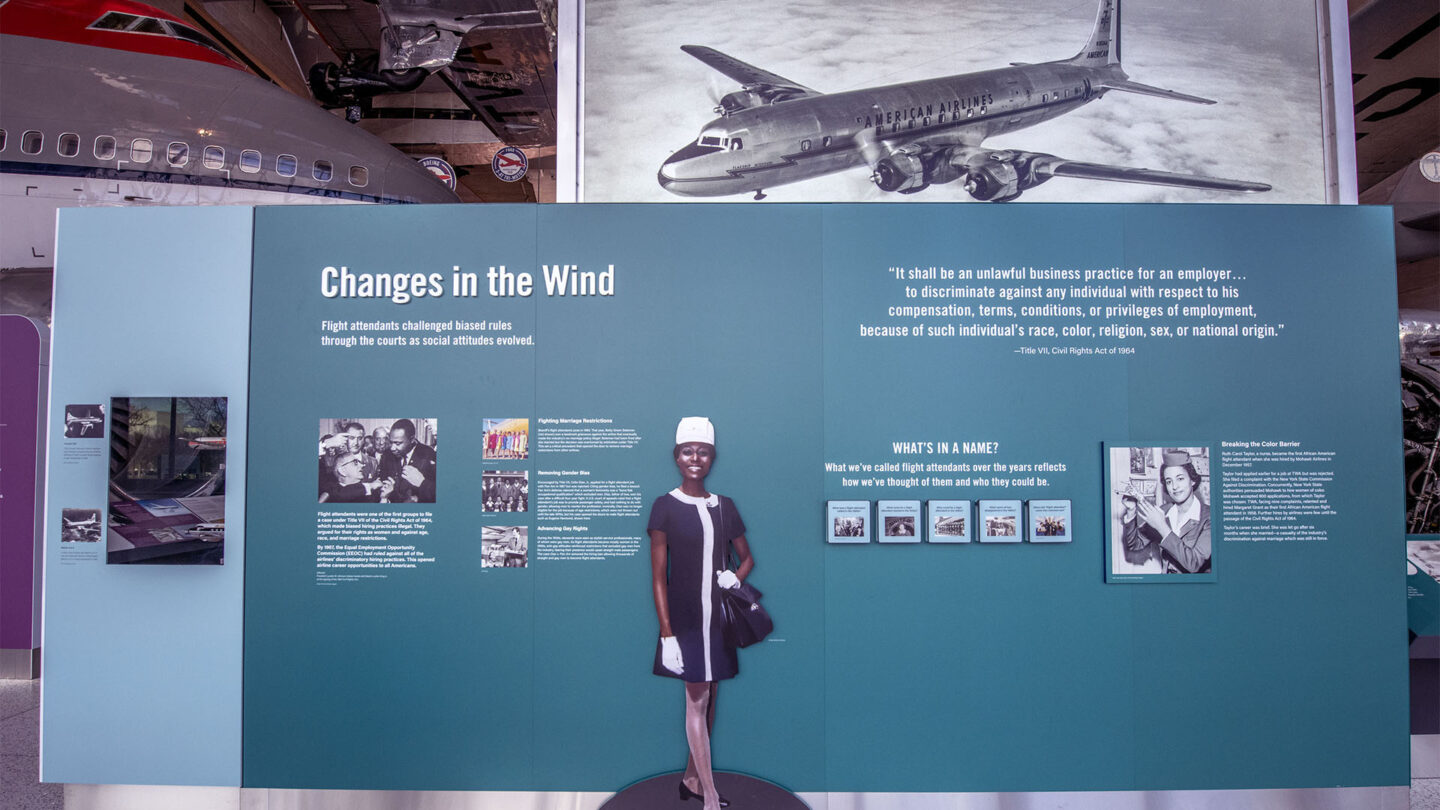
Flight attendants challenged biased rules through the courts as social attitudes evolved.
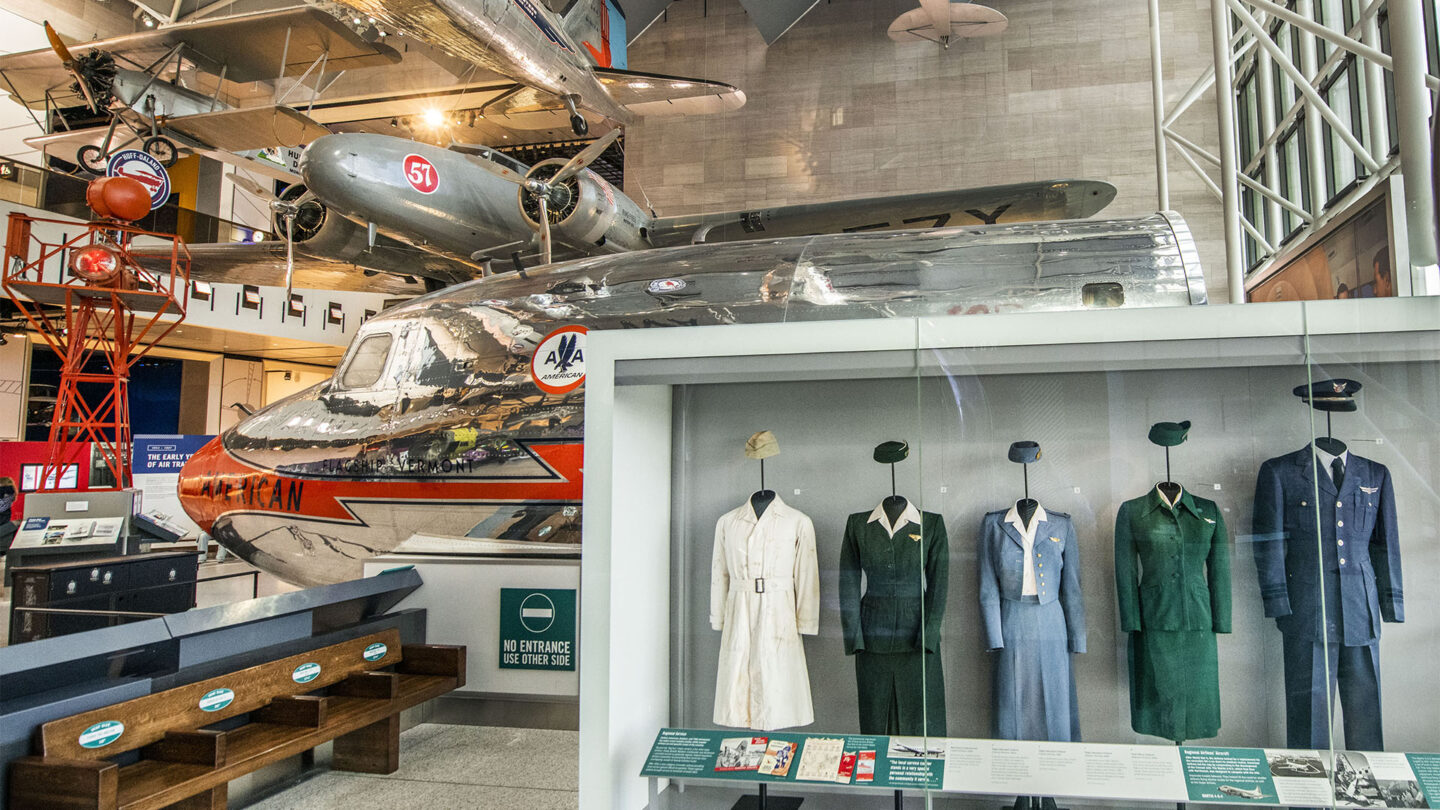
Flight attendant uniforms changed with the times. The width of airplane seats also changed as can be seen in this bench of varying seat widths.
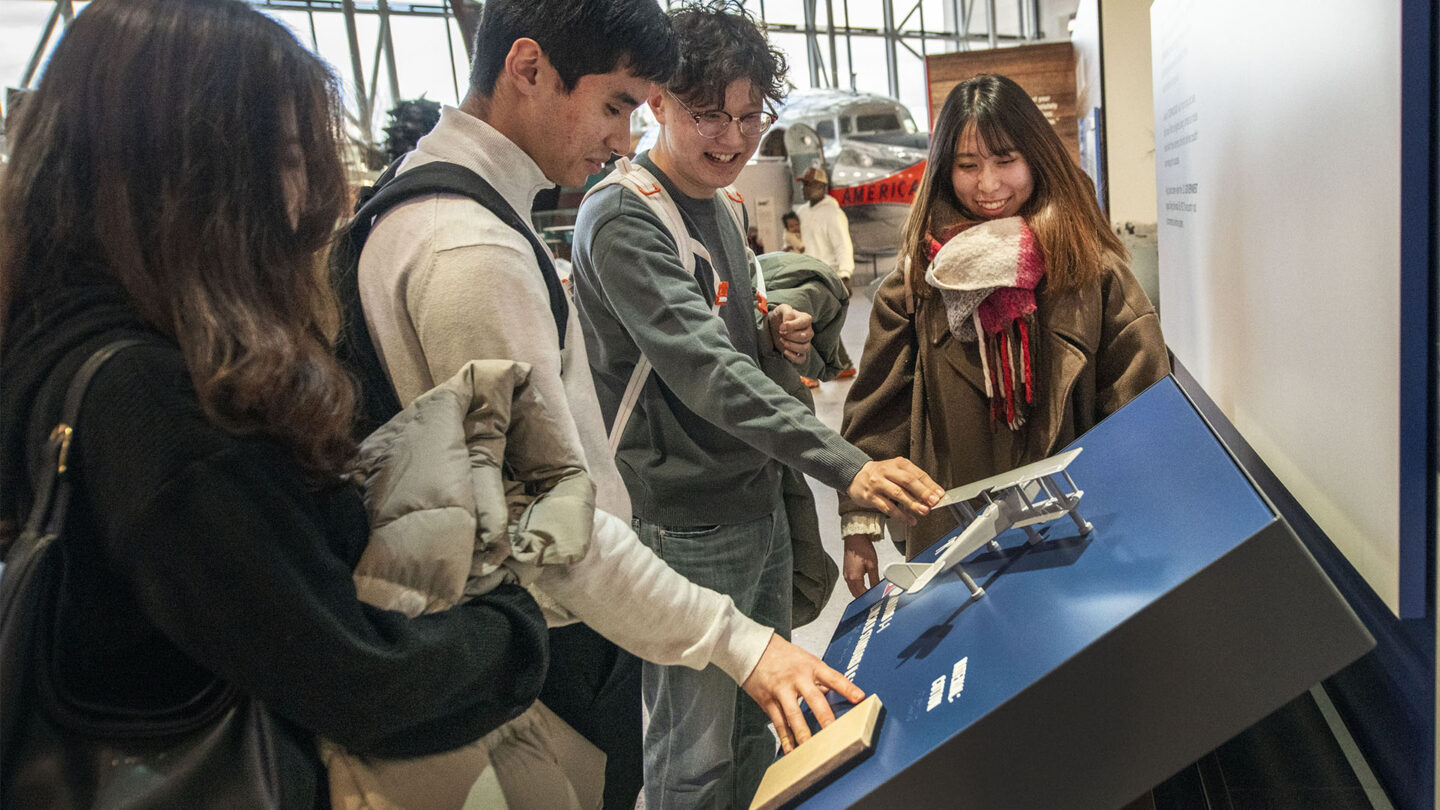
A variety of learning experiences are provided including this touchable Lincoln-Standard J-1 airplane model.
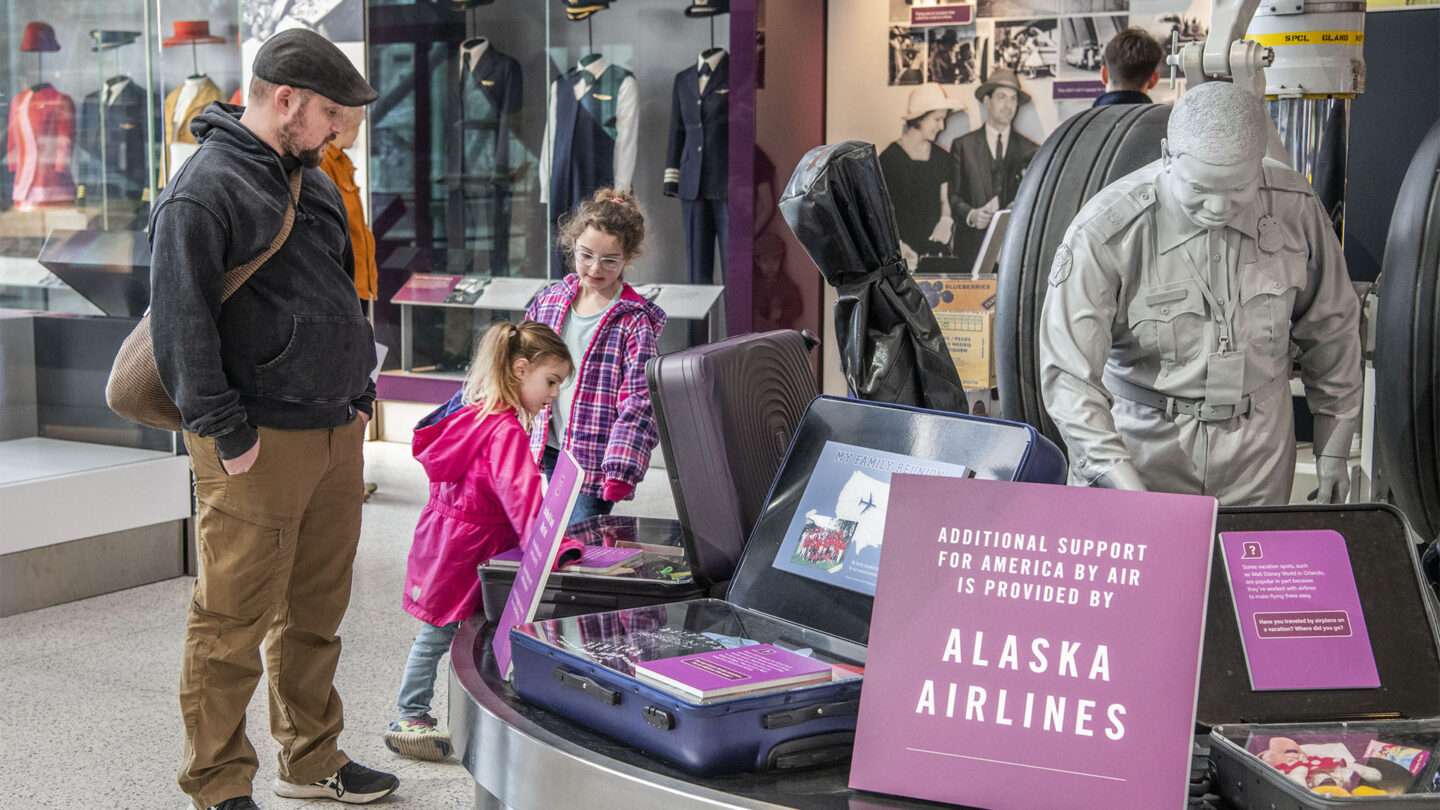
Young visitors interacting with 747 luggage pile which shows the variety of people and items that go by airplane.
Project Details
Design Team
Haley Sharpe Design
Photo Credits
NASM Photography (photography), NASM Communications (videography)
Open Date
October 2022
